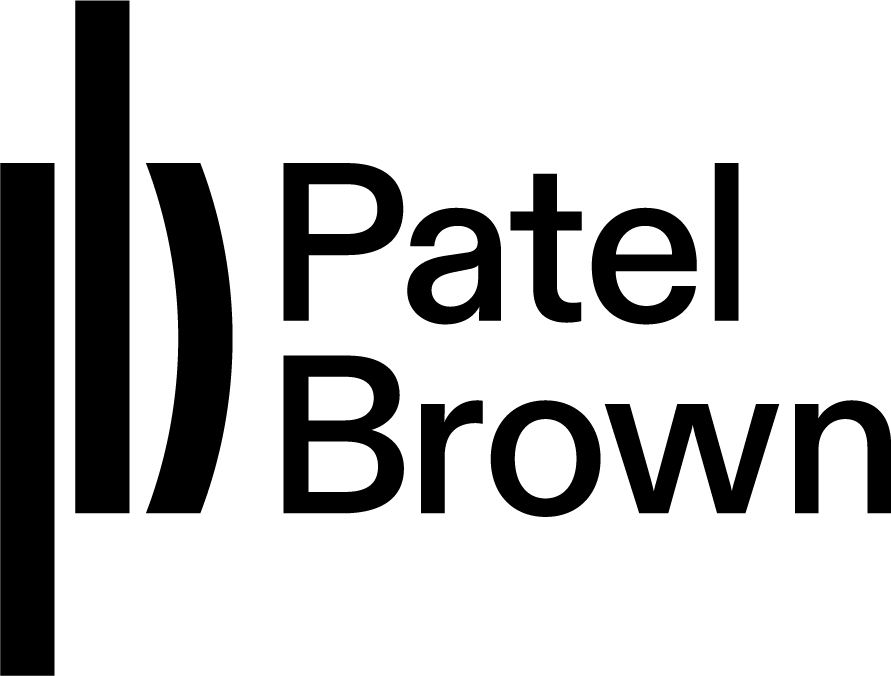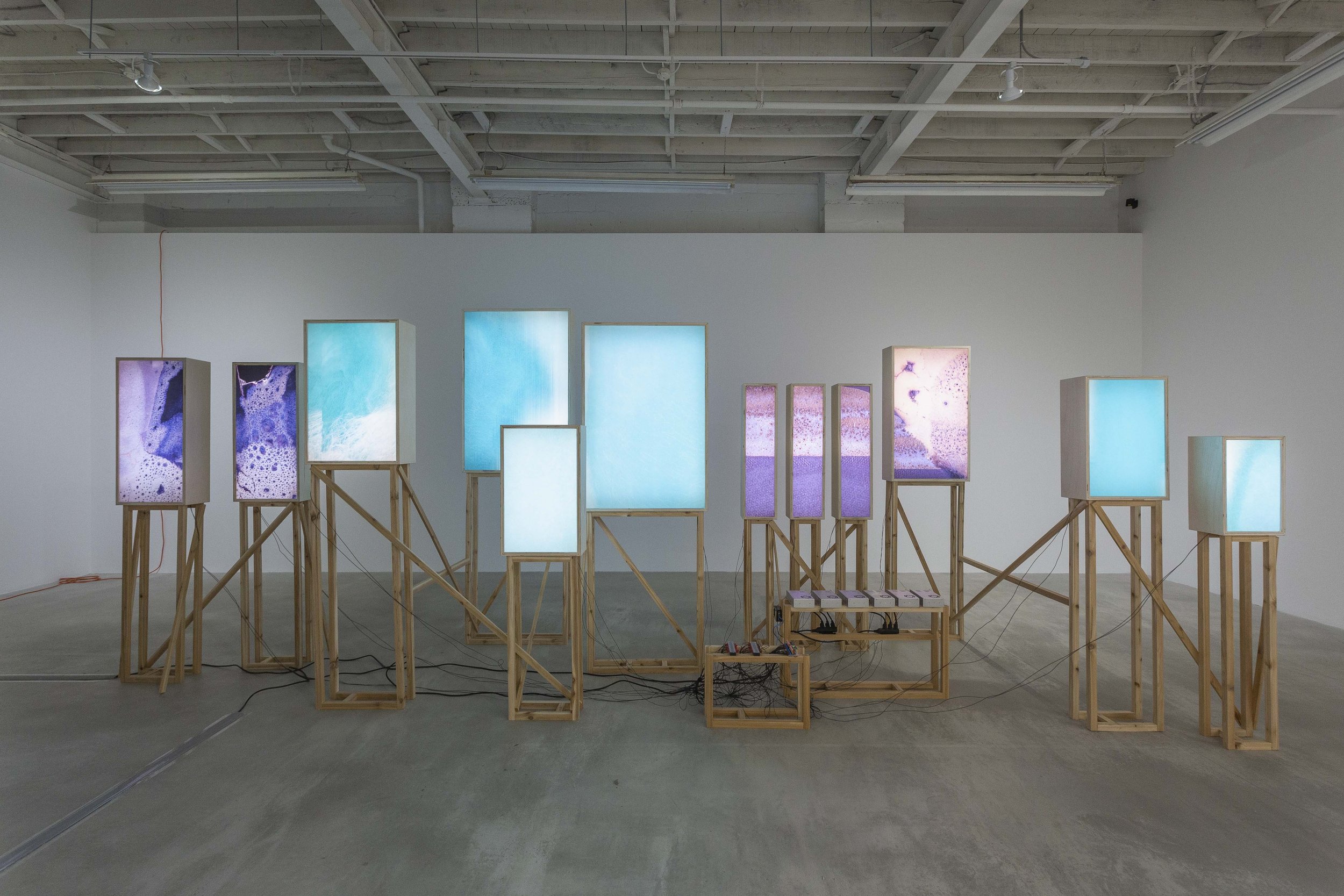PATEL BROWN GALLERY | 21 WADE AVE
Kara Springer | I / must be given words
May 14 - June 18, 2022
I
must be given words to shape my name
to the syllables of trees
I
must be given words to refashion futures
like a healer's hand (1)
Kara Springer’s installation, I / must be given words , signals a vital shift in the artist’s thinking, one that emerges with, and through, the adoption of a new material dialect. Years spent experimenting with plaster eventually became understood by the artist as an “obsessive mapping of brokenness”; the substance, once hardened, becomes brittle, weak, cracking effortlessly, an allegory for her institutional surroundings and the way that whiteness defines both architectural and psychic enclosures. Working with clay offered a respite from this preoccupation with broken systems, suggesting instead the possibility of generating new structures and ways of living. For this new work, Springer cast, fired, and glazed slabs of clay, using scanned images of these ceramics to sheathe the surfaces of a dozen lightboxes. She also uses images of her own skin—though this wouldn’t be obvious upon first glance.
In I / must be given words, high resolution scans of Springer’s skin have been transformed into deep, oceanic blues, through a simple digital function that inverses the color spectrum. These image-shades are thrown even further into flux due to the lightboxes’ ever-changing brightness: their light ebbs and flows in tandem with Springer’s breathing patterns, transmitted in real time from a device worn by the artist to a kind of central motherboard that connects them all. Containing myriad possible formal and conceptual influences, I / must be given words finds truth in the confounding of sensory experience and perception—suggesting that an unstable ground is perhaps the most productive one from which to begin making meaning.
This productive instability is shaped by Springer’s interest in a hypothetical concept known as qualia inversion. The philosopher Ned Block describes qualia as “experiential properties of sensations, feelings, perceptions and, in my view, thoughts and desires.” (2) The inverted spectrum is one example of a qualia inversion; in Block’s words, “the possibility that the brain state that I have when I see red things is the same as the brain state that you have when you see green things, and conversely.” The quandary dates back to at least the 17th century, when John Locke argued that “because one Man’s Mind could not pass into another Man’s Body, to perceive, what Appearances were produced by those Organs; neither the Ideas hereby, nor the Names, would be at all confounded, or any Falshood be in either.” (3)
I / must be given words borrows its title from the poem “Negus,” by Barbadian poet and scholar Kamau Brathwaite. Central to “Negus” and Brathwaite’s larger oeuvre is the understanding of creolization as a powerfully subversive creative force—an idea with applications far exceeding a conventional understanding of how language evolves and functions. For Brathwaite, creolization becomes a philosophy of being, an existential answer surfacing in the wake of, and in living resistance to, the incomprehensible traumas of European colonization. The scholar Anne Collett describes Brathwaite as “foremost among those who believed that although the losses were great, they were not entire; that survival, syncretism, creolisation and creativity were the key markers of the Caribbean…” (4) Resonating with Collett’s description, Alfred J. López’s close reading of a passage from “Negus” quoted also at the top of this text (I / must be given words to refashion futures / like a healer's hand) argues that “to ‘refashion’ in this context…is not necessarily to oppose or destroy, or even entirely to reject; it is rather to reconstitute, to revise from materials already at hand.” (5)
Springer, who was also born in Barbados, ‘refashions’ many materials in the creation of this installation, but clay and flesh are perhaps most crucial to its objecthood. This particular pairing undoubtedly recalls the Christian God from Genesis who makes life from clay, but is perhaps more rightfully associated with any number of Indigenous creation myths that share the theme. (6) Springer employs several layers of abstraction in the work (in addition to the chromatic inversion, the extreme magnification of the images factors here) as a means of confronting, with the materials at hand, the phenomenological dilemma of the Body that produces its Appearance, which in turn produces its Idea, which in turn produces its Name. It is possible to see how each link in this chain of meaning might be ruptured; Brathwaite tells us that it is not just possible, but necessary to do so. He begins “Negus” with the refrain it / it / it /…it is not / it is not enough / it is not enough to be free, arguing that material forms of prosperity alone will never represent full liberation. Only language, with its ability to refashion ideas, and so restructure reality, might counter that false promise.
—Ana Tuazon
Footnotes:
1 Edward Brathwaite, “Negus,” The Arrivants: A New World Trilogy (London: Oxford University Press, 1973)
2 Ned Block, "Qualia," in A Companion to the Philosophy of Mind
3 Alex Byrne, "Inverted Qualia," in The Stanford Encyclopedia of Philosophy
4 Anne Collette, “Sounding Silence,” presented at ‘The Power of Caribbean Poetry – Word and Sound’ Conference, 2012.
5 Alfred J. López, Posts and Pasts: a Theory of Postcolonialism, 2001.
6 https://en.wikipedia.org/wiki/Creation_of_life_from_clay






